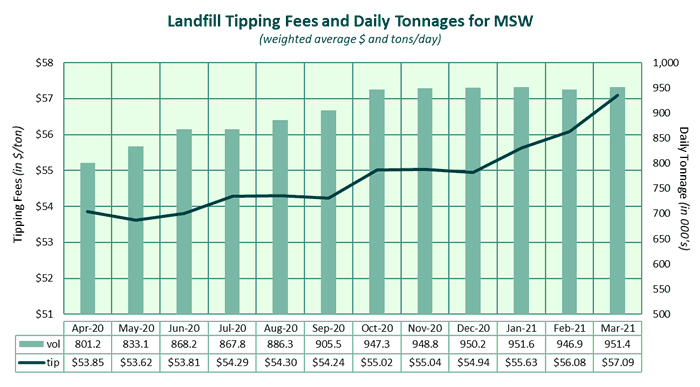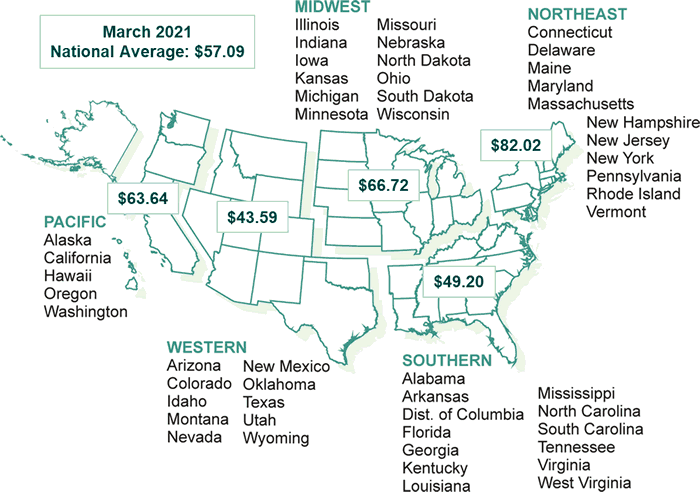Landfill Prices up Sharply Since the Beginning of the Year
Date: April 20, 2021
Source: News Room
The average price to landfill MSW has risen sharply in the last few months, up 3.5 percent just since December 2020. This is in tandem with rising volumes flowing into landfills as the economy recovers. Prices are up 6.5 percent for the year even after stagnating through much of the second quarter. In general, pricing which had been growing at a steady clip of around 3.5 percent, stalled as companies and municipalities struggled to hang on to business from cash-strapped customers. Over the longer term however, pricing has been strong reflective of a strong pre-COVID economy, decreasing landfill capacity and pricing discipline exercised by the large waste companies.

Landfill volumes are up 9.3 percent from their lows a year ago with the brunt of the economic impacts caused by COVID lockdown orders. Volumes flowing into landfills hit their lowest point in April 2020 where they were off as much as 13.5 percent from a year earlier. This is in almost perfect tandem with US monthly Gross Domestic Product (GDP), a popular indicator of the nation's economic health.
Across the country and by region prices are all up but especially in the Midwest where they are up 15 percent over their year-ago lows. Only the Pacific states had more modest pricing growth of 4.5 percent year-over-year. That is likely due to the greater share of landfill volume controlled by municipalities which is just over 50 percent. That contrasts with roughly 36 percent municipal-control of landfill volumes nationwide.

More detailed statistics are available in Waste Business Journal's latest Monthly Pricing and Volume Index that includes data through March 2021.
Waste Business Journal conducts research and publishes reports on the waste management industry. Our mission is to provide industry stakeholders with the vital information they need to guide their wise decisions.
Our researchers survey individual waste processing and disposal facilities, waste management companies and government entities. We gather information about the types and volumes of the many types of waste being managed, the prices paid, what kinds of equipment are employed, who owns the facility, who operates it, the market area served, remaining and operating capacity, among many other questions. We compare the data we collect with those collected from other sources such as the various state regulatory agencies, the US EPA, and others to cross check and augment the information.
Sign up to receive our free Weekly News Bulletin